- Home
- Gaston Leroux
Phantom of the Opera (Barnes & Noble Classics Series) Page 28
Phantom of the Opera (Barnes & Noble Classics Series) Read online
Page 28
There is no need to repeat here how greatly the case excited the capital. The kidnapping of the artist, the death of the Comte de Chagny under such exceptional conditions, the disappearance of his brother, the drugging of the gas-man at the Opera and of his two assistants: what tragedies, what passions, what crimes had surrounded the idyll of Raoul and the sweet and charming Christine! ... What had become of that wonderful, mysterious artist of whom the world was never, never to hear again? ... She was represented as the victim of a rivalry between the two brothers; and nobody suspected what had really happened, nobody understood that, as Raoul and Christine had both disappeared, both had withdrawn far from the world to enjoy a happiness which they would not have cared to make public after the inexplicable death of Count Philippe.... They took the train one day from “the northern railway station of the world.” ... Possibly, I too shall take the train at that station, one day, and go and seek around thy lakes, O Norway, 0 silent Scandinavia, for the perhaps still living traces of Raoul and Christine and also of Mamma Valérius, who disappeared at the same time! ... Possibly, some day, I shall hear the lonely echoes of the North repeat the singing of her who knew the Angel of Music! ...
Long after the case was pigeonholed by the unintelligent care of M. le Juge d’Instruction Faure, the newspapers made efforts, at intervals, to fathom the mystery. One evening paper alone, which knew all the gossip of the theatres, said:
“We recognize the touch of the Opera ghost.”
And even that was written by way of irony.
The Persian alone knew the whole truth and held the main proofs, which came to him with the pious relics promised by the ghost. It fell to my lot to complete those proofs with the aid of the daroga himself. Day by day, I kept him informed of the progress of my inquiries; and he directed them. He had not been to the Opera for years and years, but he had preserved the most accurate recollection of the building, and there was no better guide than he possible to help me discover its most secret recesses. He also told me where to gather further information, whom to ask; and he sent me to call on M. Poligny, at a moment when the poor man was nearly drawing his last breath. I had no idea that he was so very ill, and I shall never forget the effect which my questions about the ghost produced upon him. He looked at me as if I were the devil and answered only in a few incoherent sentences, which showed, however—and that was the main thing-the extent of the perturbation which O. G., in his time, had brought into that already very restless life (for M. Poligny was what people called a man of pleasure).
When I came and told the Persian of the poor result of my visit to M. Poligny, the daroga gave a faint smile and said:
“Poligny never knew how far that extraordinary blackguard of an Erik humbugged him.”—The Persian, by the way, spoke of Erik sometimes as a demigod and sometimes as the lowest of the low—“Poligny was superstitious and Erik knew it. Erik knew most things about the public and private affairs of the Opera. When M. Poligny heard a mysterious voice tell him, in Box Five, of the manner in which he used to spend his time and abuse his partner’s confidence, he did not wait to hear any more. Thinking at first that it was a voice from Heaven, he believed himself damned; and then, when the voice began to ask for money, he saw that he was being victimized by a shrewd blackmailer to whom Debienne himself had fallen a prey. Both of them, already tired of management for various reasons, went away without trying to investigate further into the personality of that curious O. G., who had forced such a singular memorandum-book upon them. They bequeathed the whole mystery to their successors and heaved a sigh of relief when they were rid of a business that had puzzled them without amusing them in the least.”
I then spoke of the two successors and expressed my surprise that, in his Memoirs of a Manager, M. Moncharmin should describe the Opera ghost’s behaviour at such length in the first part of the book and hardly mention it at all in the second. In reply to this, the Persian, who knew the Memoirs as thoroughly as if he had written them himself, observed that I should find the explanation of the whole business if I would just recollect the few lines which Moncharmin devotes to the ghost in the second part aforesaid. I quote these lines, which are particularly interesting because they describe the very simple manner in which the famous incident of the twenty-thousand francs was closed:
“As for O.G., some of whose curious tricks I have related in the first part of my Memoirs, I will only say that he redeemed by one spontaneous fine action all the worry which he had caused my dear friend and partner and, I am bound to say, myself. He felt, no doubt, that there are limits to a joke, especially when it is so expensive and when the commissary of police has been informed, for, at the moment when we had made an appointment in our office with M. Mifroid to tell him the whole story, a few days after the disappearance of Christine Daaé, we found, on Richard’s table, a large envelope, inscribed, in red ink, ‘With 0. G. ’s compliments.’ It contained the large sum of money which he had succeeded in playfully extracting, for the time being, from the treasury. Richard was at once of the opinion that we must be content with that and drop the business. I agreed with Richard. All’s well that ends well. What do you say, O. G.?”
Of course, Moncharmin, especially after the money had been restored, continued to believe that he had, for a short while, been the butt of Richard’s sense of humour, whereas Richard, on his side, was convinced that Moncharmin had amused himself by inventing the whole of the affair of the Opera ghost, in order to revenge himself for a few jokes.
I asked the Persian to tell me by what trick the ghost had taken twenty-thousand francs from Richard’s pocket in spite of the safety-pin. He replied that he had not gone into this little detail, but that, if I myself cared to make an investigation on the spot, I should certainly find the solution to the riddle in the managers’ office by remembering that Erik had not been nicknamed the trap-door lover for nothing. I promised the Persian to do so as soon as I had time, and I may as well tell the reader at once that the results of my investigation were perfectly satisfactory; and I hardly believed that I should ever discover so many undeniable proofs of the authenticity of the feats ascribed to the ghost.
The Persian’s manuscript, Christine Daaé’s papers, the statements made to me by the people who used to work under MM. Richard and Moncharmin, by little Meg herself (the worthy Madame Giry, I am sorry to say, is no more) and by Sorelli, who is now living in retirement at Louveciennes:ab all the documents relating to the existence of the ghost, which I propose to deposit in the archives of the Opera, have been checked and confirmed by a number of important discoveries of which I am justly proud. I have not been able to find the house on the lake, Erik’s having blocked up all the secret entrances.ac On the other hand, I have discovered the secret passage of the Communists, the planking of which is falling to pieces in parts, and also the trap-door through which Raoul and the Persian penetrated into the cellars of the opera-house. In the Communists’ dungeon, I noticed numbers of initials traced on the walls by the unfortunate people confined in it; and among these were an “R” and a “C.” R. C.: Raoul de Chagny. The letters are there to this day.
If the reader will visit the Opera one morning and ask leave to stroll where he pleases, without being accompanied by a stupid guide, let him go to Box Five and knock with his fist or stick on the enormous column that separates this from the stage-box. He will find that the column sounds hollow. After that, do not be astonished by the suggestion that it was occupied by the voice of the ghost: there is room inside the column for two men. If you are surprised that, when the various incidents occurred, no one turned round to look at the column, you must remember that it presented the appearance of solid marble, and that the voice contained in it seemed rather to come from the opposite side, for, as we have seen, the ghost was an expert ventriloquist. The column was elaborately carved and decorated with the sculptor’s chisel; and I do not despair of one day discovering the ornament that could be raised or lowered at will, so as to admit of the ghost’s mysteriou
s correspondence with Mame Giry and of his generosity.
However, all these discoveries are nothing, to my mind, compared with that which I was able to make, in the presence of the acting-manager, in the managers’ office, within a couple of inches from the desk-chair, and which consisted of a trap-door, the width of a board in the flooring and the length of a man’s forearm and no longer; a trap-door that falls back like the lid of a box; a trap-door through which I can see a hand come and dexterously fumble at the pocket of a swallow-tail coat.
That is the way the forty-thousand francs went! ... And that also is the way by which, through some trick or other, they were returned.
Speaking about this to the Persian, I said:
“So we may take it, as the forty-thousand francs were returned, that Erik was simply amusing himself with that memorandum-book of his?”
“Don’t you believe it!” he replied. “Erik wanted money. Thinking himself without the pale of humanity, he was restrained by no scruples and he employed his extraordinary gifts of dexterity and imagination, which he had received by way of compensation for his extraordinary ugliness, to prey upon his fellowmen. His reason for restoring the forty-thousand francs, of his own accord, was that he no longer wanted it. He had relinquished his marriage with Christine Daaé. He had relinquished everything above the surface of the earth.”1
According to the Persian’s account, Erik was born in a small town not far from Rouen. He was the son of a master-mason. He ran away at an early age from his father’s house, where his ugliness was a subject of horror and terror to his parents. For a time, he frequented the fairs, where a showman exhibited him as the “living corpse.” He seems to have crossed the whole of Europe, from fair to fair, and to have completed his strange education as an artist and magician at the very fountain-head of art and magic, among the Gipsies. A period of Erik’s life remained quite obscure. He was seen at the fair of Nijni-Novgorod,ad where he displayed himself in all his hideous glory. He already sang as nobody on this earth had ever sung before; he practised ventriloquism and gave displays of legerdemainae so extraordinary that the caravans returning to Asia talked about it during the whole length of their journey. In this way, his reputation penetrated the walls of the palace at Mazenderan, where the little sultana, the favourite of the Shah-in-Shah,af was boring herself to death. A dealer in furs, returning to Samarkandag from Nijni-Novgorod, told of the marvels which he had seen performed in Erik’s tent. The trader was summoned to the palace and the daroga of Mazenderan was told to question him. Next the daroga was instructed to go and find Erik. He brought him to Persia, where for some months Erik’s will was law. He was guilty of not a few horrors, for he seemed not to know the difference between good and evil. He took part calmly in a number of political assassinations ; and he turned his diabolical inventive powers against the Emir of Afghanistan, who was at war with the Persian empire.ah The Shah took a liking to him.
This was the time of the rosy hours of Mazenderan, of which the daroga’s narrative has given us a glimpse. Erik had very original ideas on the subject of architecture and thought out a palace much as a conjuror contrives a trick-casket. The Shah ordered him to construct an edifice of this kind. Erik did so; and the building appears to have been so ingenious that His Majesty was able to move about in it unseen and to disappear without a possibility of the trick’s being discovered. When the Shah-in-Shah found himself the possessor of this gem, he ordered Erik’s yellow eyes to be put out. But he reflected that, even when blind, Erik would still be able to build so remarkable a house for another sovereign; and also that, as long as Erik was alive, some one would know the secret of the wonderful palace. Erik’s death was decided upon, together with that of all the labourers who had worked under his orders. The execution of this abominable decree devolved upon the daroga of Mazenderan. Erik had shown him some slight services and procured him many a hearty laugh. He saved Erik by providing him with the means of escape, but nearly paid with his head for his generous indulgence.
Fortunately for the daroga, a corpse, half-eaten by the birds of prey, was found on the shore of the Caspian Sea, and was taken for Erik’s body, because the daroga’s friends had dressed the remains in clothing that belonged to Erik. The daroga was let off with the loss of the imperial favour, the confiscation of his property and an order of perpetual banishment. As a member of the Royal House, however, he continued to receive a monthly pension of a few hundred francs from the Persian treasury; and on this he came to live in Paris.
As for Erik, he went to Asia Minor and thence to Constantinople, where he entered the Sultan’s employment. In explanation of the services which he was able to render a monarch haunted by perpetual terrors, I need only say that it was Erik who constructed all the famous trap-doors and secret chambers and mysterious strong-boxes which were found at Yildiz-Kiosk ai after the last Turkish revolution. He also invented those automata, dressed like the Sultan and resembling the Sultan in all respects,aj which made people believe that the Commander of the Faithful was awake at one place, when, in reality, he was asleep elsewhere.
Of course, he had to leave the Sultan’s service for the same reasons that made him fly from Persia: he knew too much. Then, tired of his adventurous, formidable and monstrous life, he longed to be some one “like everybody else.” And he became a contractor, like any ordinary contractor, building ordinary houses with ordinary bricks. He tendered for part of the foundations in the Opera. His estimate was accepted. When he found himself in the cellars of the enormous playhouse, his artistic, fantastic, wizard nature resumed the upper hand. Besides, was he not as ugly as ever? He dreamed of creating for his own use a dwelling unknown to the rest of the earth, where he could hide from men’s eyes for all time.
The reader knows and guesses the rest. It is all in keeping with this incredible and yet veracious story. Poor, unhappy Erik! Shall we pity him? Shall we curse him? He asked only to be “some one,” like everybody else. But he was too ugly! And he had to hide his genius or use it to play tricks with, when, with an ordinary face, he would have been one of the most distinguished of mankind! He had a heart that could have held the empire of the world; and, in the end, he had to content himself with a cellar. Ah, yes, we must needs pity the Opera ghost.
I have prayed over his mortal remains, that God might show him mercy notwithstanding his crimes. Yes, I am quite sure that I prayed beside his body, the other day, when they took it from the spot where they were burying the phonographic records. It was his skeleton. I did not recognize it by the ugliness of the head, for all men are ugly when they have been dead as long as that, but by the plain gold ring which he wore and which Christine Daaé had certainly slipped on his finger, when she came to bury him in accordance with her promise.
The skeleton was lying near the little well, in the place where the Angel of Music first held Christine Daaé fainting in his trembling arms, on the night when he carried her down to the cellars of the opera-house.
And, now, what do they mean to do with that skeleton? Surely they will not bury it in the common grave! ... I say that the place of the skeleton of the Opera ghost is in the archives of the National Academy of Music. It is no ordinary skeleton.
PUBLISHER’S NOTE ON THE PARIS OPERA HOUSE, FROM THE ORIGINAL AMERICAN EDITION OF THE PHANTOM OF THE OPERA (1911)
That Mr. Leroux has used, for the scene of his story, the Paris Opera House as it really is and has not created a building out of his imagination, is shown by this interesting description of it taken from an article which appeared in Scribner’s Magazine in 1879, a short time after the building was completed:
“The new Opera House, commenced under the Empire and finished under the Republic, is the most complete building of the kind in the world and in many respects the most beautiful. No European capital possesses an opera house so comprehensive in plan and execution, and none can boast an edifice equally vast and splendid.
“The site of the Opera House was chosen in 1861. It was determined to lay the founda
tion exceptionally deep and strong. It was well known that water would be met with, but it was impossible to foresee at what depth or in what quantity it would be found. Exceptional depth also was necessary, as the stage arrangements were to be such as to admit a scene fifty feet high to be lowered on its frame. It was therefore necessary to lay a foundation in a soil soaked with water which should be sufficiently solid to sustain a weight of 22,000,000 pounds, and at the same time to be perfectly dry, as the cellars were intended for the storage of scenery and properties. While the work was in progress, the excavation was kept free from water by means of eight pumps, worked by steam power, and in operation, without interruption, day and night, from March second to October thirteenth. The floor of the cellar was covered with a layer of concrete, then with two coats of cement, another layer of concrete and a coat of bitumen. The wall includes an outer wall built as a coffer-dam, a brick wall, a coat of cement, and a wall proper, a little over a yard thick. After all this was done the whole was filled with water, in order that the fluid, by penetrating into the most minute interstices, might deposit a sediment which would close them more surely and perfectly than it would be possible to do by hand. Twelve years elapsed before the completion of the building, and during that time it was demonstrated that the precautions taken secured absolute impermeability and solidity.
“The events of 1870 interrupted work just as it was about to be prosecuted most vigorously, and the new Opera House was put to new and unexpected uses. During the siege, it was converted into a vast military storehouse and filled with a heterogeneous mass of goods. After the siege the building fell into the hands of the Commune and the roof was turned into a balloon station. The damage done, however, was slight.

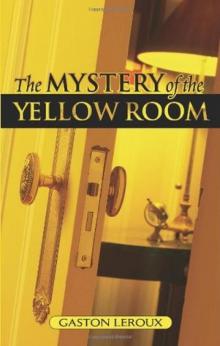 The Mystery of the Yellow Room
The Mystery of the Yellow Room The Secret of the Night
The Secret of the Night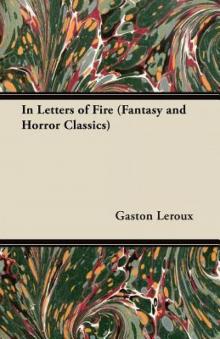 In Letters of Fire
In Letters of Fire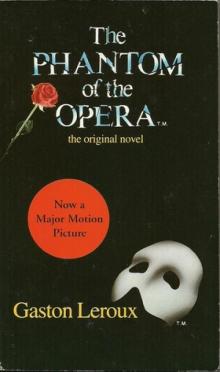 The Phantom of the Opera
The Phantom of the Opera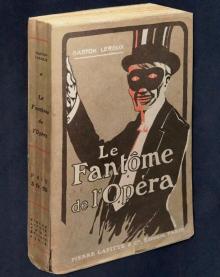 Fantôme de l'Opéra. English
Fantôme de l'Opéra. English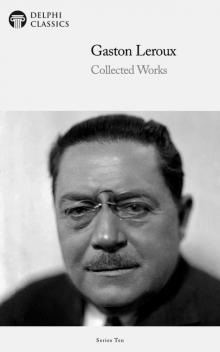 Collected Works of Gaston Leroux
Collected Works of Gaston Leroux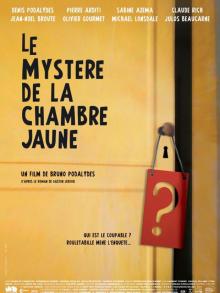 Le mystère de la chambre jaune. English
Le mystère de la chambre jaune. English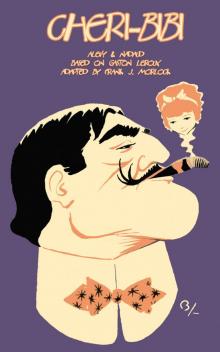 Cheri-Bibi: The Stage Play
Cheri-Bibi: The Stage Play The Phantom of the Opera (Oxford World's Classics)
The Phantom of the Opera (Oxford World's Classics)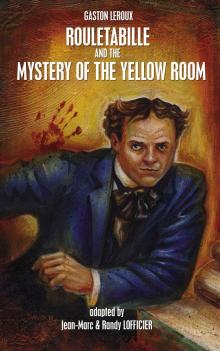 Rouletabille and the Mystery of the Yellow Room
Rouletabille and the Mystery of the Yellow Room The Perfume of the Lady in Black
The Perfume of the Lady in Black The Bloody Doll
The Bloody Doll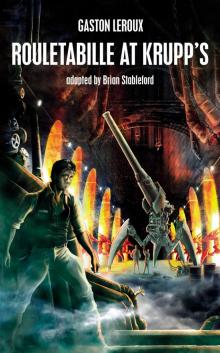 Rouletabille at Krupp's
Rouletabille at Krupp's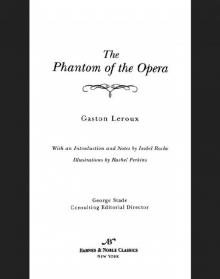 Phantom of the Opera (Barnes & Noble Classics Series)
Phantom of the Opera (Barnes & Noble Classics Series)